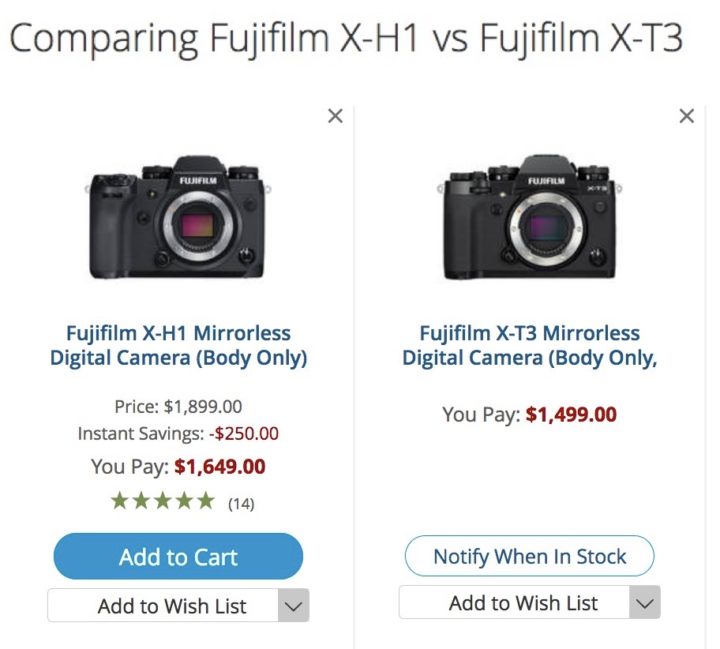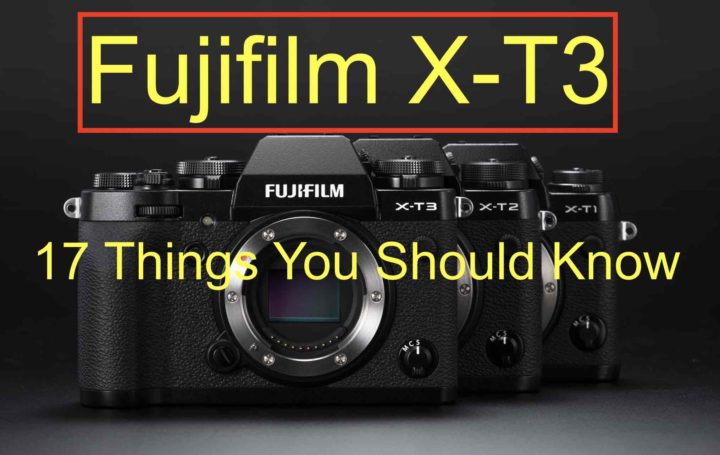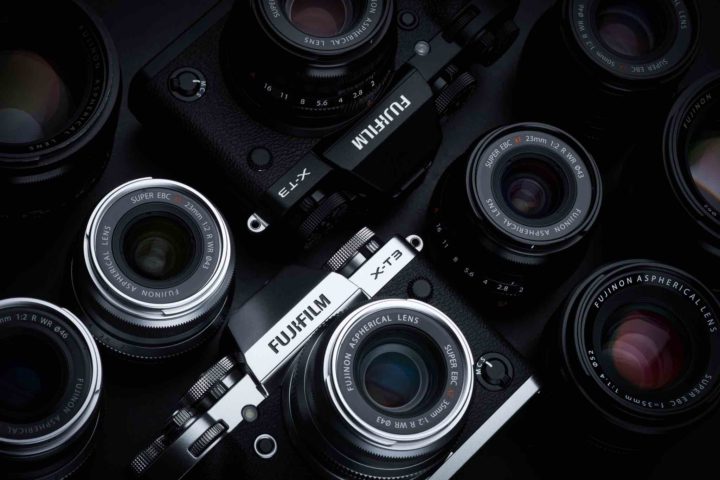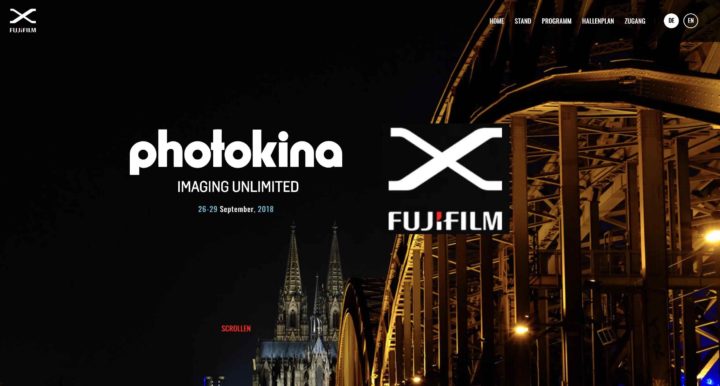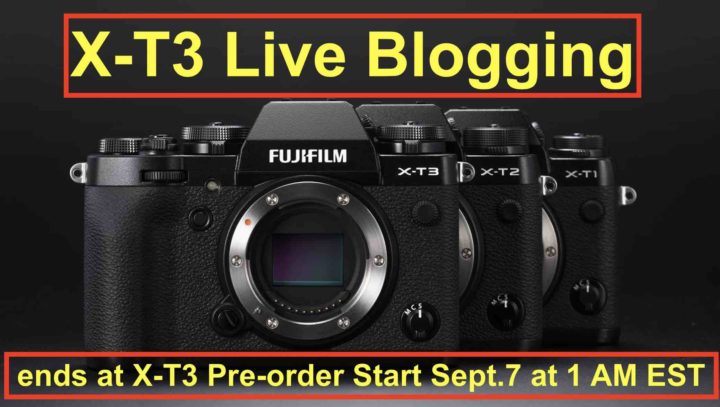
Fujifilm X-T3 Live Blogging
*** LIVE BLOGGING CLOSED – Thanks for Following ***
X-T3 Pre-order
Pre-order start September 7th at 1 AM EST
Fujifilm X-T3: BHphoto, AmazonUS, Adorama, Focuscamera
Fujifilm X-T3 w/ 18-55mm: BHphoto, AmazonUS, Adorama, Focuscamera
VG-XT3 Vertical Battery Grip: BHphoto, AmazonUS, Adorama
MHG-XT3 Metal Hand Grip: BHphoto, AmazonUS, Adorama
BLC-XT3 Bottom Leather Case: BHphoto, AmazonUS, Adorama
CVR-XT3 Cover Kit: BHphoto, AmazonUS, Adorama
RR100 Remote Release: BHphoto, AmazonUS, Adorama
USA: BHphoto, AmazonUS, Adorama, Focuscamera
AUS: CameraPro
EU: CalumentDE, DigitechCH, WexUK, PCHstore
X-T3 Rumors/News + Community
X-T3 Official Fujifilm Info
Press Release / Product Page + Sample Images / Product Catalogue
X-T3 First Looks
Eye-AF and autofocus overall seems to be hugely improved (watch DRPeview first look below). Great video features. Looks like a very solid update to the X-T2.
Samples / Hands on Photos
Mixed News
Press Event Live Streams & Fuji manager Interivews
Videos LINK
This is just the link. All videos are embedded down below, if you prefer to see them on FR.
Videos EMBEDDED
Video focus is on first looks and hands on. Go to Fujifilm Global Youtube and Fuji Guys Youtube to see all promo videos


